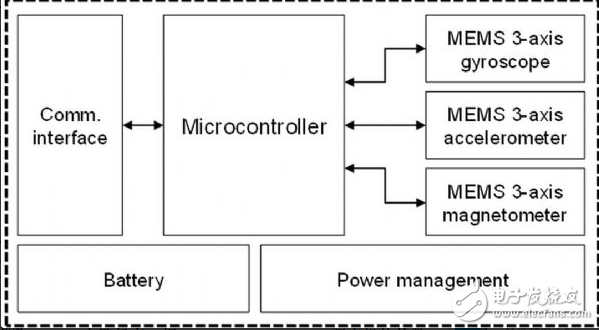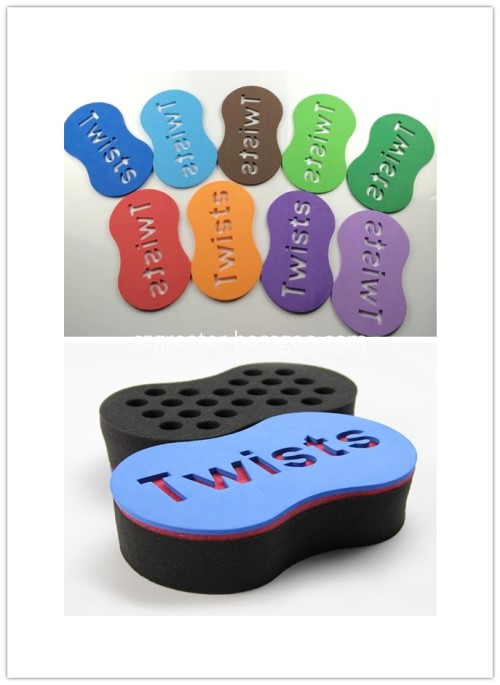Wearable devices are paired with handheld devices and the Internet to create more life-related applications in a variety of fields, including life, sports, and medical care. Because the wearable device is small and close to the human body, it is designed to have more stringent requirements for volume, weight, heat, EMI, power management, anti-shock, moisture, waterproof, dustproof, comfort and even fashion sense. Wearable devices, introducing a variety of dedicated MEMS electronic components and sensing technology.
Microelectromechanical components for wearable devices
With the advancement of MEMS (micro-electromechanical) component technology, various sensors can be easily embedded into handheld devices and wearable devices, making technology applications ubiquitous. Because the wearable device is worn on the human body, it is closer to humans than the handheld device, and can extend more life applications, or faithfully detect and record the reaction of human physiological functions. Currently known wearable devices that provide human technology applications (voice communication/amplification/personal assistants), quality of life (food calories, sleep tips, diet advice), exercise (game record, training fitness, virtual Coach), medical assistance (electrocardiogram, pulse recording, sleep improvement, etc.), travel assistance (route suggestions, navigation instructions, journey records), public service applications (children/pets/old people missing associations), etc. Intimate application.

Sensor system architecture diagram for basic wearable devices (fp7-smac.org)

Information delivery system architecture diagram for medical wearable devices (Intersive)
Because wearable devices are smaller, closer to the human body, and must be worn for extended periods of time, these devices are designed for heat, EMI (electromagnetic interference), power management, protection against electric shock, sweat/water/dust, comfort, and accuracy. The requirements for volume, weight, and even fashion are more stringent than those of handheld devices. Therefore, manufacturers must consider these issues when designing products. MEMS MEMS parts suppliers also offer a wide range of products to meet the needs of system manufacturers when designing wearable devices.
Components of the wearable device - CPU, MCU
The CPUs (processors) of today's high-end handheld devices have reached the milestone of eight cores and are faster. However, in order to reduce the power consumption of sensors in all-weather detection, collection and processing, many products have begun to work with MCU (microcontroller) as a motion-sensing dedicated coprocessor (MoTIon Co-processor).
Take the built-in M7 of Apple iPhone 5s, iPad Air and iPad mini 2 as an example. It is a co-processor, using the custom-made Cortex-M3 microcontroller of NXP LPC1800 series. The operating clock is 150MHz, which can be collected. Measure and store the sensed data (from STM three-axis gyroscope, Bosch three-axis accelerator, AKM electronic compass and other sensor information), even if the mobile phone can operate in standby mode, continue to record the sensing data, wait for the device to wake up After that, the data can be processed continuously. This design allows the device to save power even under long-term operation (such as sports).
In the application of wearable devices, the Sensor Hub MCU is mostly used, that is, the MCU of the ARM Cortex M series is used as the main controller to achieve high efficiency and low power consumption. For example, the Fitbit Wisdom Bracelet uses ST's STM32L151C6 Cortex-M3 low-power 16-bit 32MHz MCU and Jawbone UP smart bracelet with TI's MSP430F5528 16-bit 25MHz MCU. The Pebble smart watch uses ST's STM32F205RE Cortex-M3 architecture 32-bit 120MHz MCU, Sony SmartWatch SW2 also uses ST MCU, clock is 180MHz.
As for Samsung's Galaxy Gear smart watch, it still uses its own Exynos 800MHz single-core CPU for sensing and processing. Unfortunately, the battery capacity is too small, it will be charged after 25 hours of continuous use, although the performance is strong, but the sustainability is not good, the market The reaction was cold. Therefore, Samsung's Gear 2 family, published in MWC, uses MCU design and can be used for 2 to 3 days. It can be seen that in order to reduce power consumption and increase battery life, more wearable products will be switched to MCUs as main processors in the future.
Components of wearable devices - MEMS, Sensor
In terms of sensors, the basic three somatosensory/dynamic sensing components currently deployed in wearable devices are electronic meters, three-axis gyroscopes, and accelerometers, which can be used for step counting, Detect heartbeat, physiological tracking, and more.
As for the environmental sensor part, it is added according to the application requirements of the product. For example, a proximity sensor, a thermometer, a hygrometer, or a barometer. If there are auxiliary control parts, such as gestures, voice input, etc., you will choose to built infra-red (Infrared) or Camera Module (Mic) and other components for simple gestures and voice recognition. For example, Google Glass includes an Ambient Light Sensor and a proximity sensor for adjusting brightness and object detection.
In terms of software technology, many manufacturers have developed their own patented algorithms for soft and hard products in wearable applications. For example, the Nike+ Running App (Running Training Program), Jawbone Up, and Fitbit series bracelets use FullPower's MoTIonX technology.
Components of wearable devices for sensors such as medical and health care
Consumer-grade wearable devices that provide personal care, dieting, and mobile extension applications. As for professional-grade products, there are different demands. In medical institutions, measurement-specific wearable devices have been in the early years. In recent years, due to the advancement of the department, when the volume of many measuring devices can be reduced, and the signals are transmitted wirelessly, it is not necessary. Connect a bunch of wires to make the patient move freely.
Most of the wearable devices designed by the medical or health industry are built with the above-mentioned sensor structure, and the medical rehabilitation sensor is also equipped with somatosensory technology. The functional appeal of these products is purely used to measure personal physiological information. The requirements for numerical measurement must be very precise, and the device should be able to be used for a long time, and can be built-in GSM or Wi-Fi. Wireless communication, connecting all kinds of instruments on the body to become a Body Area Network (BAN), and also can transfer the data back to the medical center, which facilitates follow-up tracking, thus achieving home care, telemedicine Application.
The following are the typical designs and solutions for wearable medical products from major manufacturers, giving you the most comprehensive reference!
Hair Twist Sponge/Magic Hair Twist Sponge
Product Description:
1. 100% brand new and high quality
2. Twist hair brush sponge3. Like nudred or magic twist brush
4. Great way to get dreads and twists!
5. Save money and time by using this great new styling product.
6. Material: EVA + Sponge

Hair Twist Sponge,Hair Curly Sponge,Men Hair Curly Sponge,Women Hair Curly Sponge
Shenzhen Greater Industry Co., Ltd. , https://www.szgreater.net